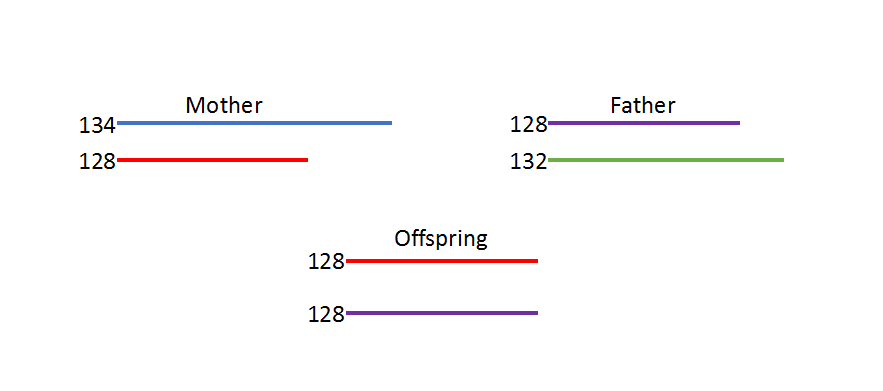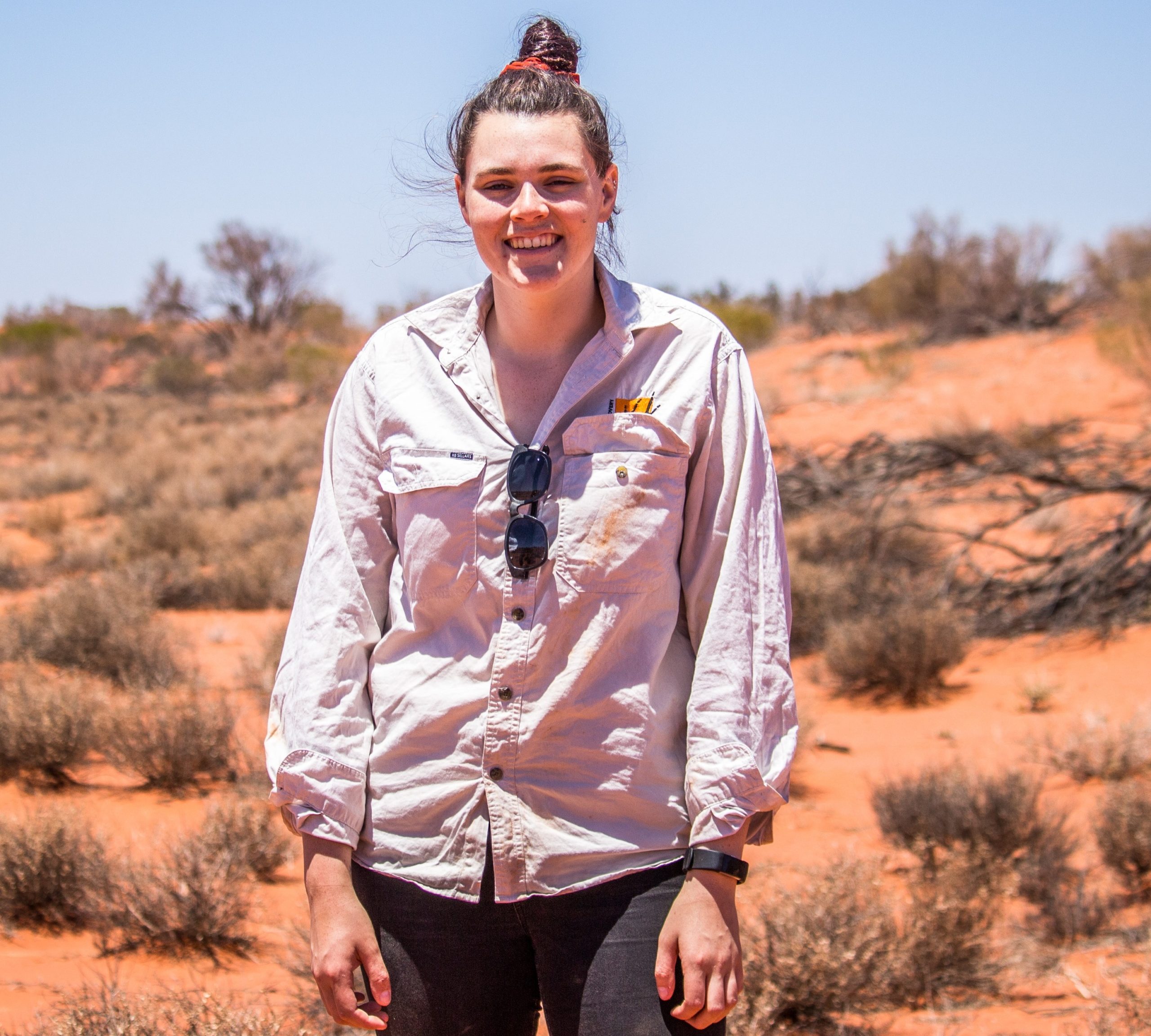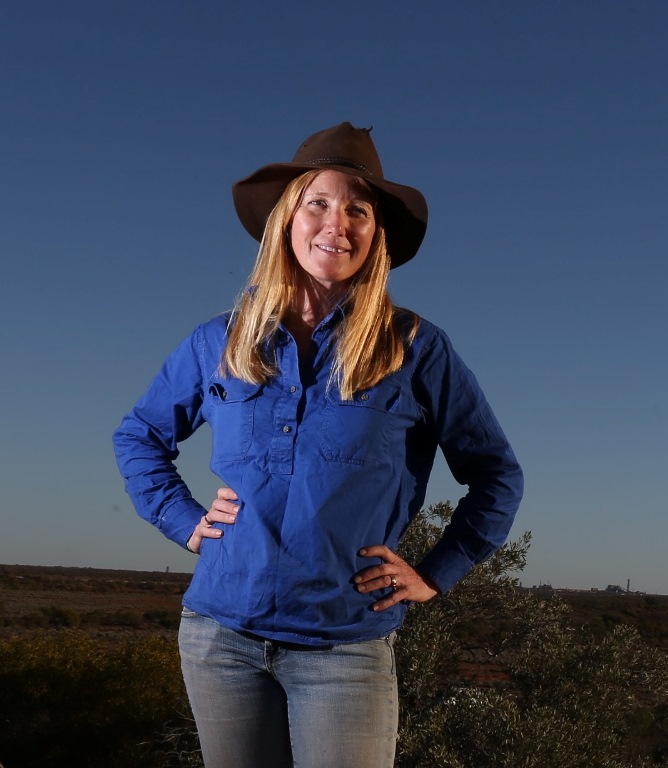By Tessa Manning, University of Adelaide Honours student
Supervised by Jeremy Austin, Katherine Moseby and Melissa Jensen
In May of 2018, Arid Recovery reintroduced 12 western quolls (Dasyurus geoffroii) to the reserve. In June and July 2018 they successfully bred and thirty offspring were born to five females. But who were the fathers of those offspring? That’s where I came in. I studied the parentage of the first generation of quolls born at Arid Recovery for my Honours project at the University of Adelaide.
Arid Recovery took small tissue samples from all 12 of the reintroduced quolls and from 23 of their 30 offspring. I then took these samples into the lab and extracted DNA. I took the DNA and used microsatellites, a genetic marker, to determine parentage. Genetic markers can be used to determine parentage because DNA is inherited half from the mother and half from the father (represented in the diagram below). So, when examining the microsatellite sequence lengths (called alleles), I can line up which allele came from the mother and which from the father. But this would take too long to do manually, so I used a program to help me.
The program was able to assign both mothers and fathers to all of the offspring. The mothers that Arid Recovery staff had identified in the field aligned with those I had assigned using the DNA. I found that 15 of 23 offspring were fathered by just one male. There was also one incident of multiple paternity, where offspring from the same litter can be fathered by different males – in this case, three offspring were fathered by one male, and one offspring was from a different male (a sister from another mister!).
These diagrams show the parentage of all 23 offspring. The multiple paternity is in the litter from mother Oodnadatta (in orange above). As you can see, Coorlay was the most successful father, with a total of 15 offspring from three different litters.
Once I knew that Coorlay had fathered most of the offspring, I needed to find out why so I could inform Arid Recovery about management of genetic diversity. I went through four hypotheses:
Hypothesis 1: Body Size
Larger males were more likely to have a higher number of offspring in previous studies of quoll parentage (spotted-tailed quoll by Glen et al. 2009) and related species of Antechinus (agile antechinus by Kraaijeveld-Smit et al. 2002, and swamp antechinus by Sale et al. 2013). But Coorlay in my study was actually the smallest of the four reintroduced males. He weighed 1160 g as opposed to the 1800-2200 g that the other males weighed. His foot length and head length measurements were also smaller. However, he did have large testes! Larger testes have been associated with sperm competition and greater paternity success in other species, but it has been previously ruled out in spotted-tailed and northern quolls. This discovery suggests that sperm competition is something that needs to be further explored in western quolls.
Hypothesis 2: Genetic Differentiation
I also tested whether Coorlay was significantly more genetically different to the females than the other males. Genetic differentiation has been hypothesised as a factor in female mate choice in related species (Antechinus spp. by Parrott et al. 2006). However, I found no significant differences in genetic relatedness.
Hypothesis 3: Home Range Size
I also explored home range size using radio-tracking data Arid Recovery provided. Coorlay had the largest home range size, about 20 hectares larger than any other male. This probably allowed him to reach females before other males, giving him an advantage by mating with those females first. Interestingly, when Arid Recovery staff were radio-tracking the quolls they recorded three of the four males sharing dens with females during the breeding season. Coorlay was not one of those males. This led to the next hypothesis on mating strategies.
Hypothesis 4: Alternative “Sneaky” Mating Tactics
In animal behaviour research, it has been put forward that males sometimes use alternative mating strategies to ensure paternity when they may not be able to physically compete with a dominant male. This is usually when a male is smaller and often involves him sneaking around and avoiding conflict with larger males. In spotted-tailed quolls, it has been suggested that males mate-guard to ensure their genes are passed on. Mate guarding involves a male defending a territory containing a female so that no other males can mate with her. That is why larger males are generally more successful in spotted-tailed quolls. We can assume that similar behaviour happens in western quolls. In this case, it is likely Coorlay employed alternative mating strategies (or “sneaky tactics”) and avoided conflict with larger males. Clues to this behaviour can be seen in his large home range, and avoidance of den sharing.
Given Coorlay’s success and the large paternity bias in their first generation, I recommend Arid Recovery introduce new males to improve genetic diversity before the next breeding season. I also recommend they continue genetic monitoring of the population in order to ensure that genetic diversity is maintained. Through further research into western quoll parentage, we can learn more about mating strategies and the factors that lead a male quoll to be successful. This information will be valuable for reintroductions of small numbers of western quolls to fenced reserves in the future.

























Any recent info on how the Quolls are faring? Are they still successfully controlling numbers of other mammals?
Quolls are continuing to do well, although they are a little tricky to monitor closely. Their impacts on other species in the first few years of reintroduction (since 2018) are hard to tease apart from the effects of drought conditions, but some trends are emerging now. Stay tuned!